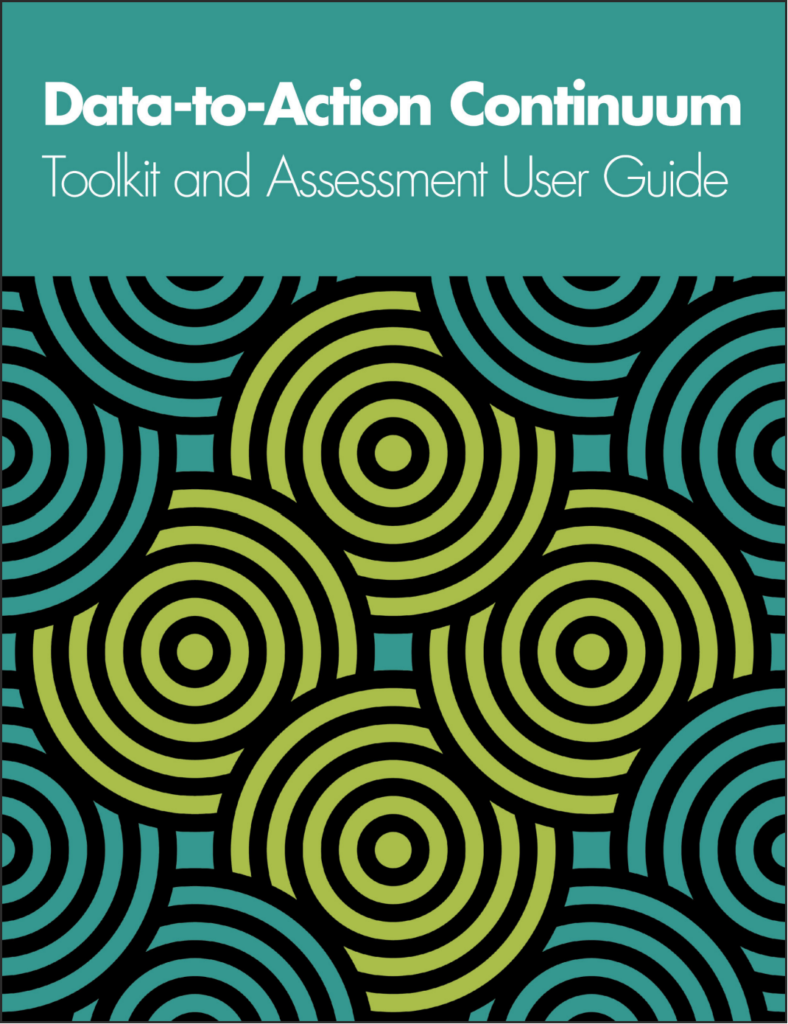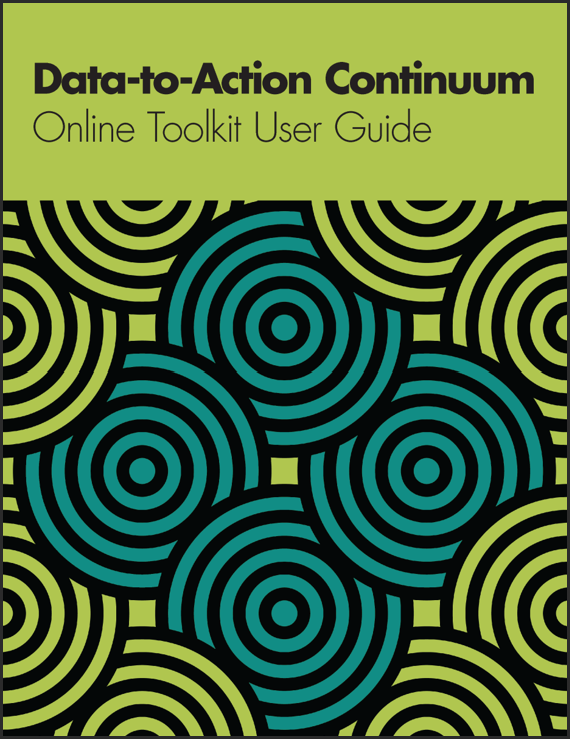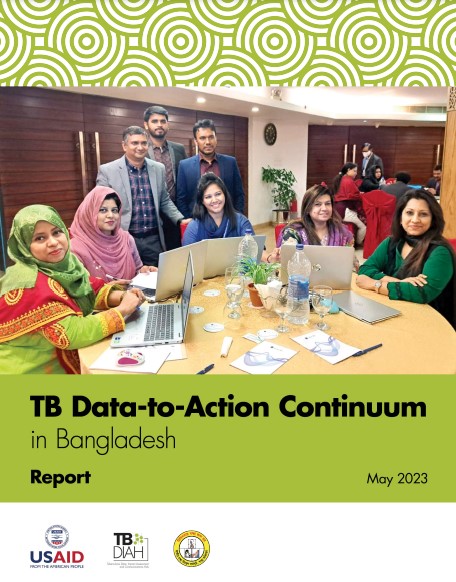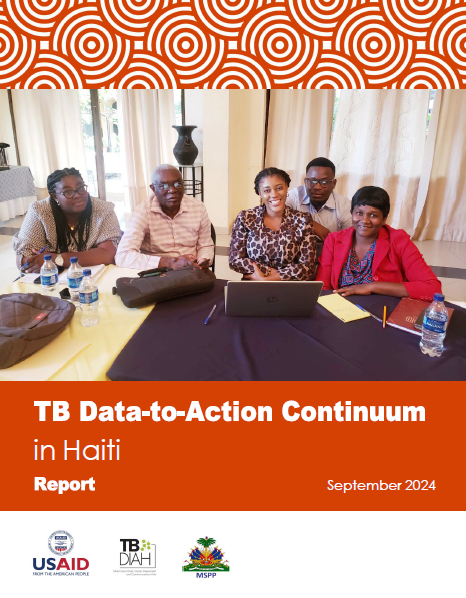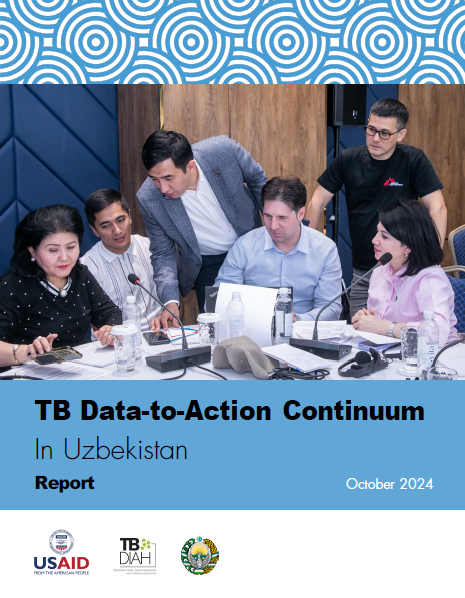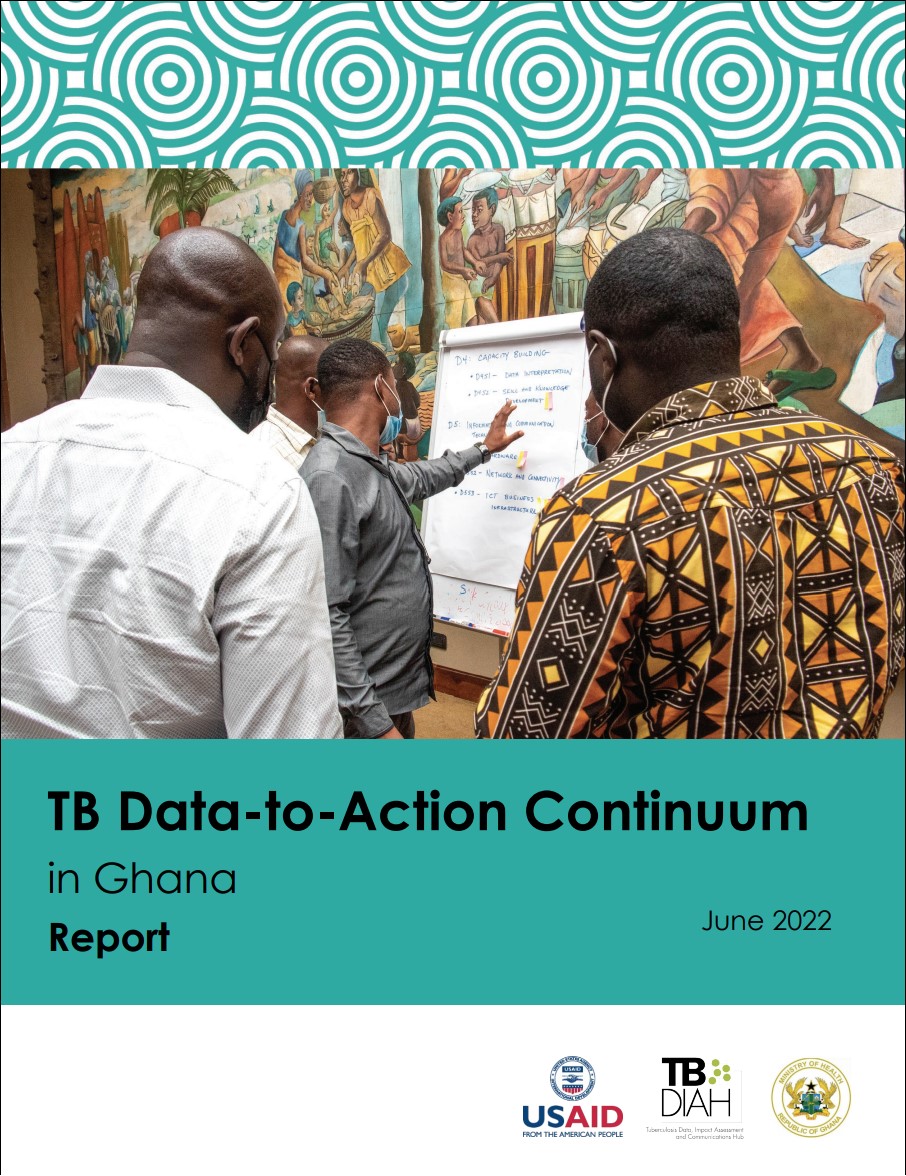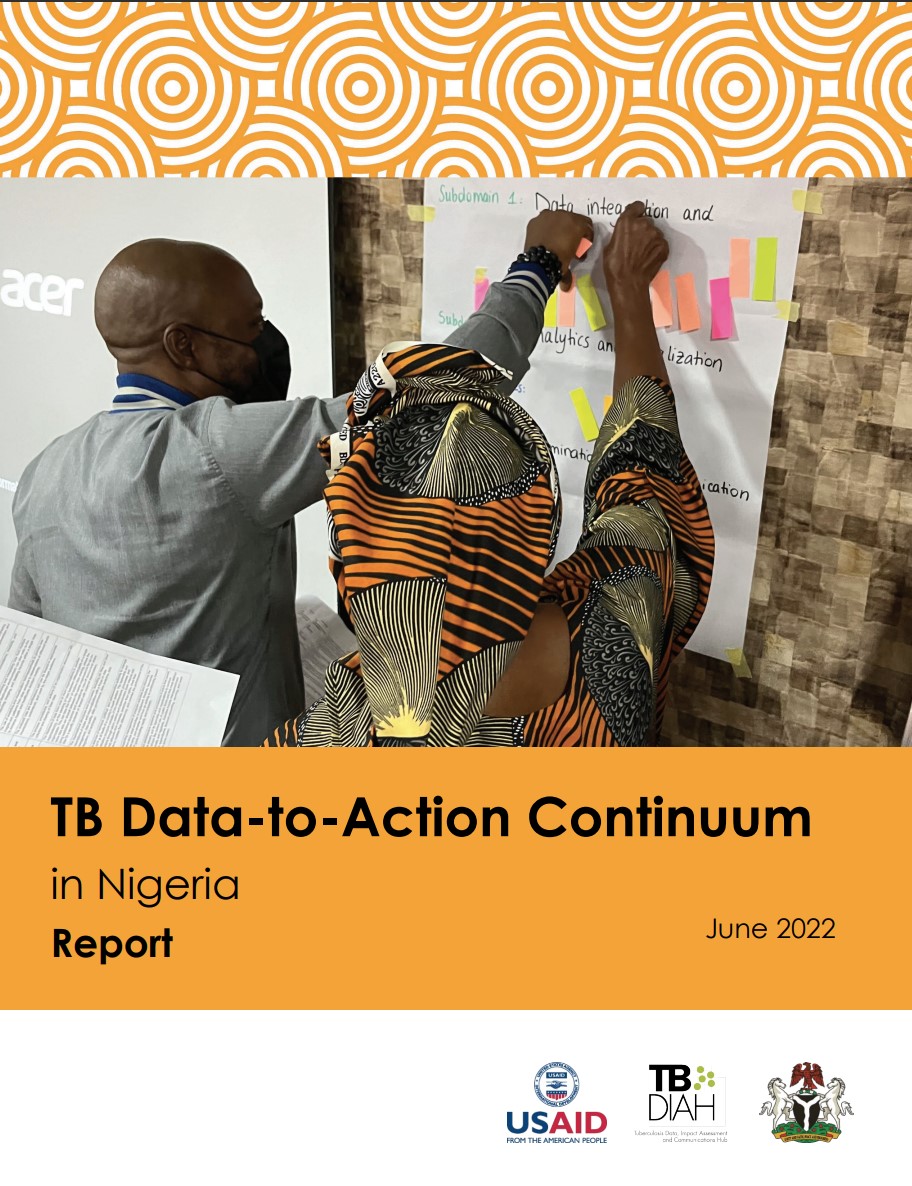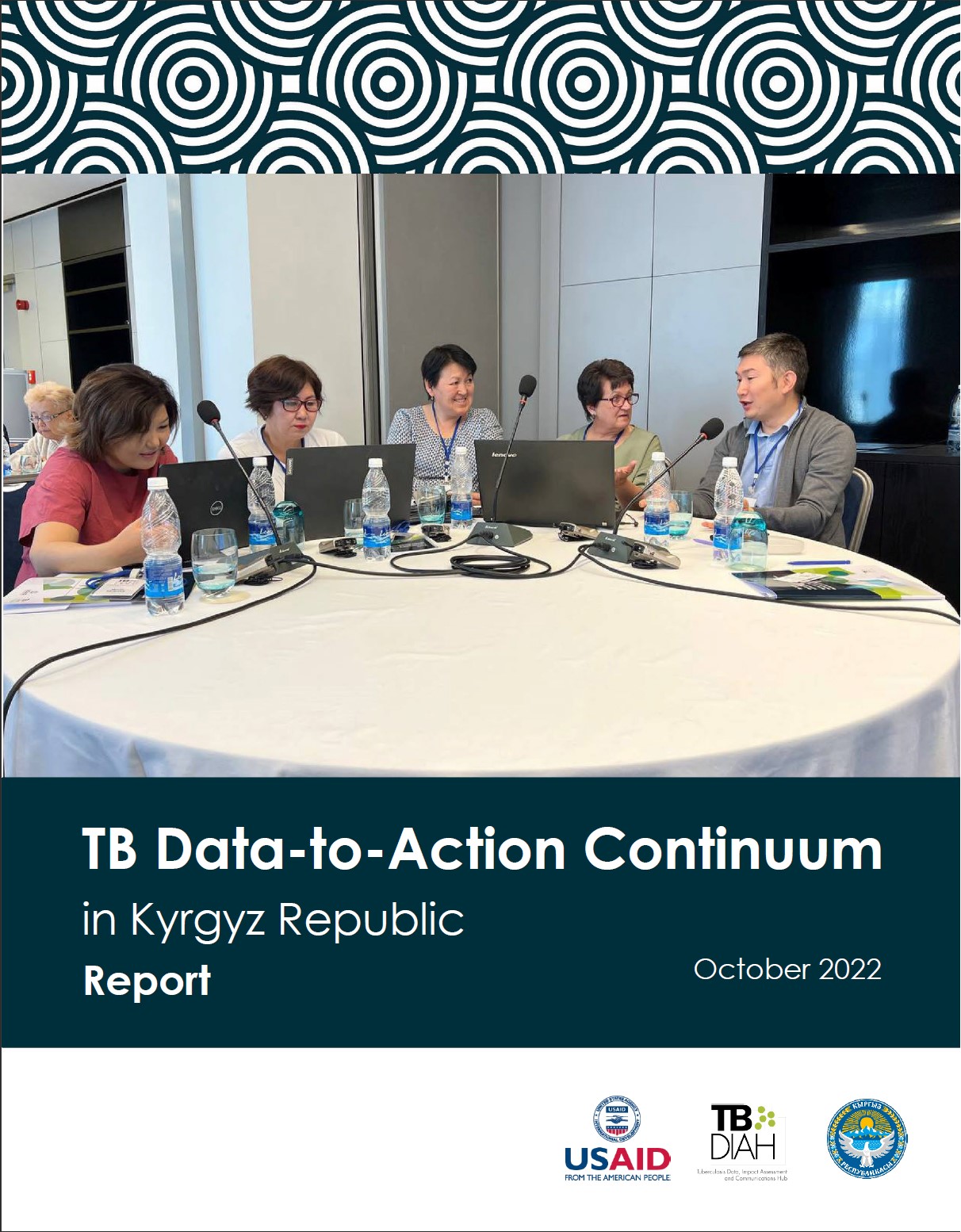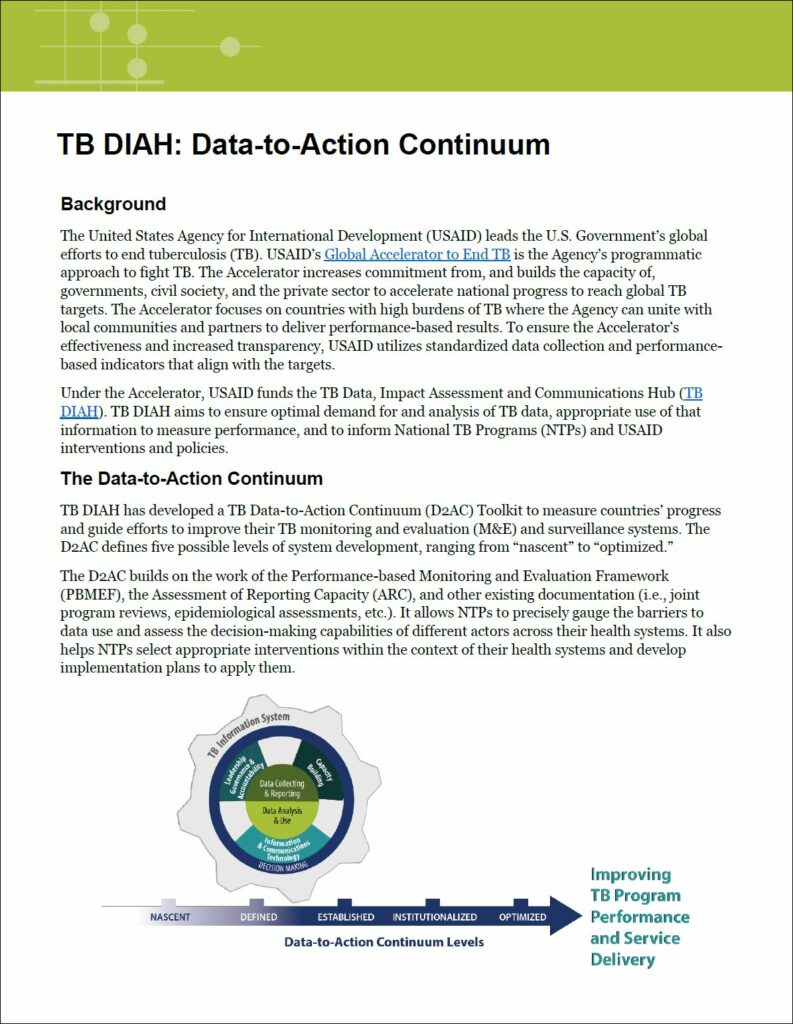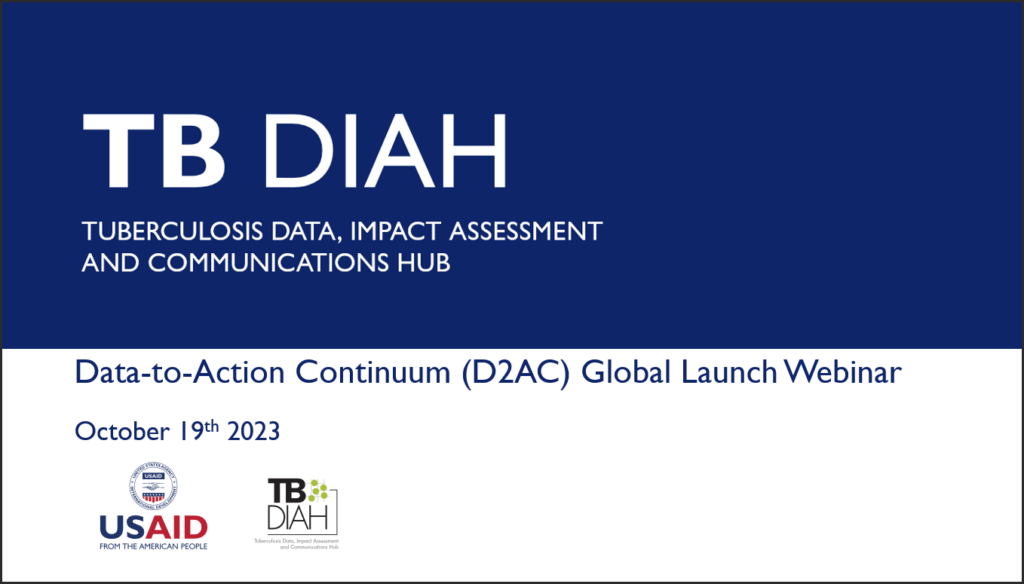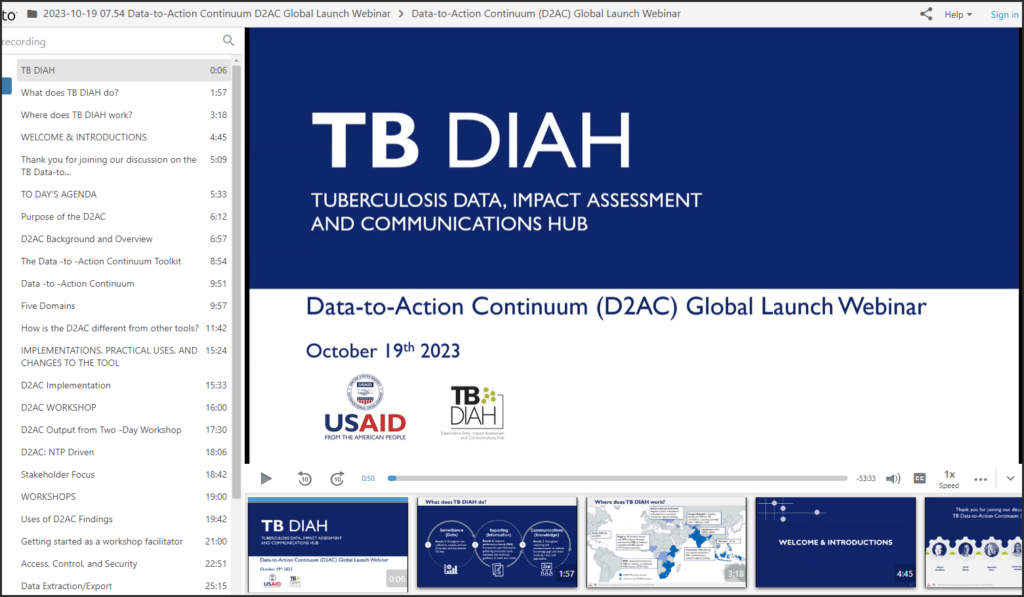The Data-to-Action Continuum (D2AC) Toolkit
The TB Data-to-Action Continuum (D2AC) Toolkit measures countries’ progress towards improving their TB monitoring and evaluation (M&E) and surveillance systems and provides information to guide their continued efforts. The D2AC defines five possible levels of system development—ranging from “nascent” to “optimized”—and allows national TB programs (NTPs) to precisely gauge the barriers to data use and assess the decision-making capabilities of different actors across their health systems. It also helps NTPs select appropriate interventions within the context of their health systems and develop implementation plans to apply them.
The D2AC Toolkit, validated by an expert advisory group and field tested, includes:
1) The Excel-based D2AC Data Collection Tool for collecting individual responses with:
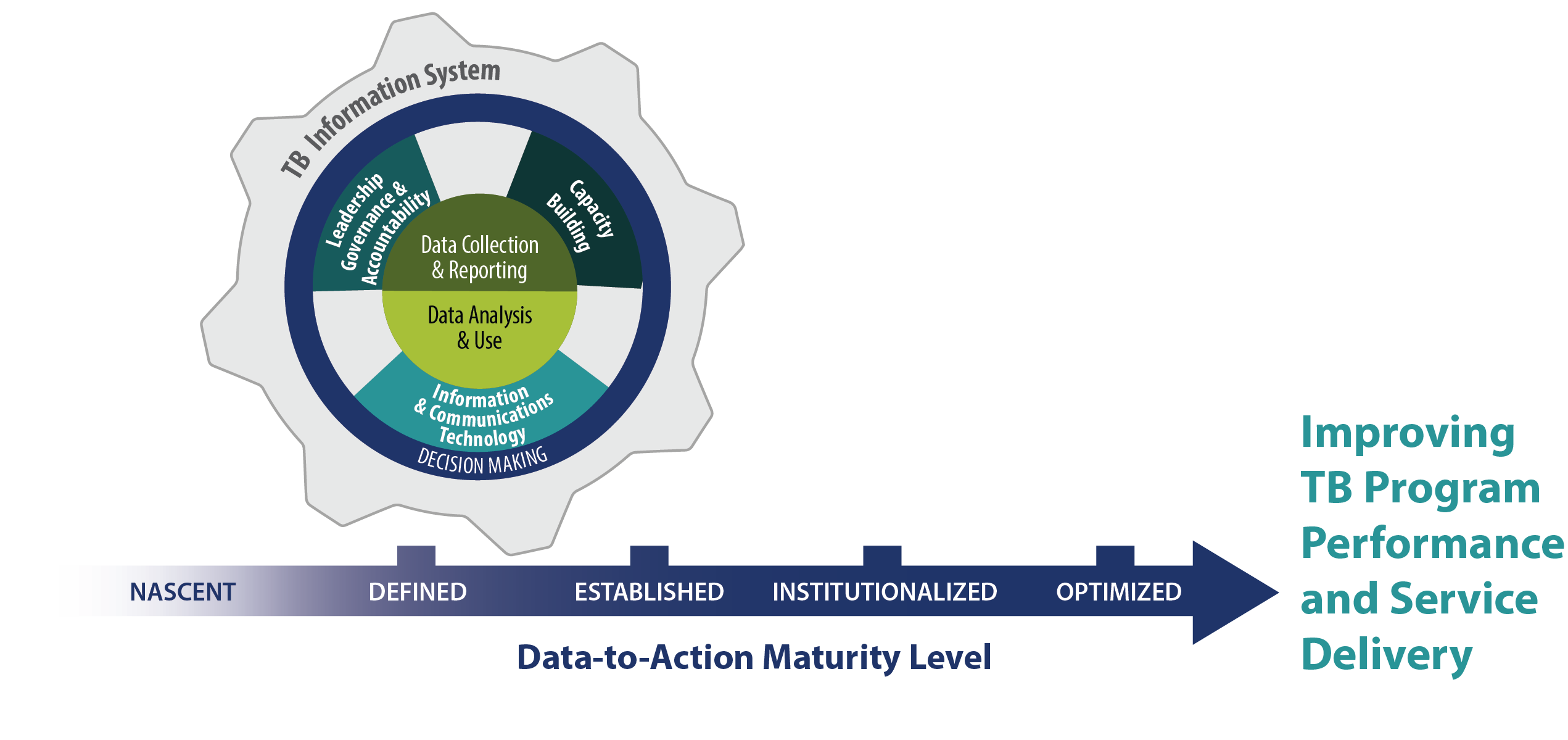
- Five defined continuum levels
- A country profile template to collect socio-economic, demographic, and epidemiological indicators
- A D2AC scale, with capability statements organized into five domains and 18 sub-domains for each of the five continuum levels
- Key user roles and decisions organized according to USAID’s TB objectives of reach, cure, prevent, and sustain
- A data collection instrument
- An analysis matrix
- An analysis dashboard
2) The Excel-based D2AC Data Analysis Tool that automatically aggregates responses from all completed data collection instruments and generates data visualizations and recommended priority actions. This enables decision makers to make sense of and apply the findings and develop an implementation plan using the template provided by D2AC. The tool is available here.
The digital D2AC toolkit combines both tools and allows for real-time data aggregation and visualization and is available in English and in French. (currently offline)
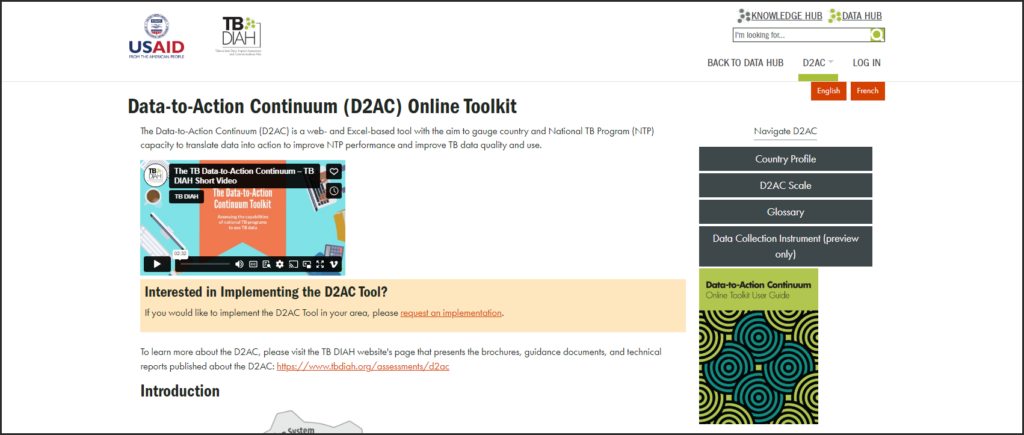
3) Two D2AC User Guides to accompany future D2AC workshop facilitators with their implementations and to assist with using the online D2AC Tool.
D2AC Country Reports
D2AC Publications
The TB DIAH team is publishing a series of articles describing the process of developing the D2AC Toolkit. The process is divided into three phases, and each phase will be documented in its own article:
- Research gaps in transforming tuberculosis data to action for better health outcomes: A systematic literature review, in the Journal of Global Health, describes the theory behind the D2AC approach and the systematic review undertaken to develop the framework.
- Development and expert validation of a ‘Data-to-Action Continuum’ to measure and advance the data use capabilities of national tuberculosis programs, in the Journal of Global Health Reports, describes the phases ranging from the creation and validation of the D2AC Data Collection Tool to the pretest of the D2AC Toolkit.
- Data-to-Action Continuum: Introduction to the D2AC Model and Toolkit, a poster presented at The Union World Conference on Lung Health 2022, describes the D2AC method and findings from the field test workshops in Ghana and Nigeria in March and April of 2022.
- Implementing the Data-to-Action Continuum Toolkit in Ghana, Nigeria, the Kyrgyz Republic, and Bangladesh, an oral presentation at The Union World Conference on Lung Health 2023, highlights the findings from the D2AC country workshops and uses of these findings by the countries following the assessments.
- The Data-to-Action Continuum: Successes and challenges from ideation to digital implementation (2020-2023), a poster presented at the Global Digital Health Forum 2023, describes the steps taken, decisions made, design choices, and successes and challenges encountered in developing a new and the first digital toolkit specific to TB data use.
- Data to Action Assessments: Cross-Country Look at Findings and Proposed Actions to Strengthen Country TB Data Use, a presentation as part of the satellite session entitled “From insights to action: Bolstering National TB Programmes and results through improved data and information systems” at The Union World Conference on Lung Health 2024, highlighting similarities and differences in the six D2AC assessments conducted by TB DIAH.
More information on the D2AC is available in our brochure:
Learn more from the Global D2AC Launch webinar held in October 2023:
